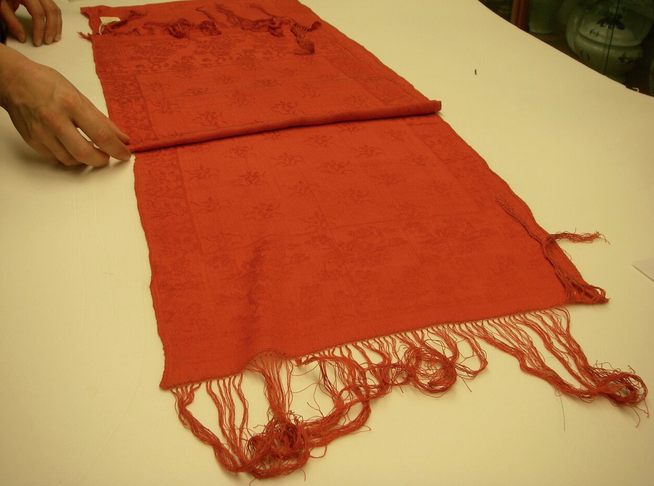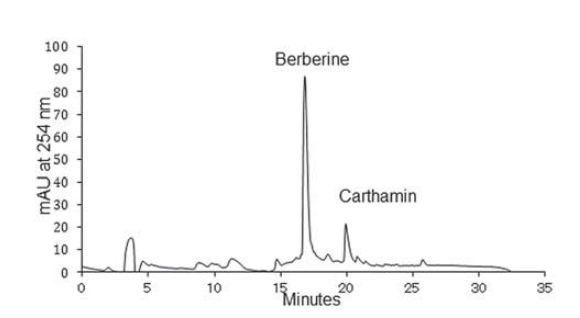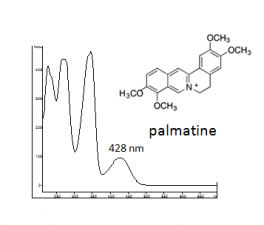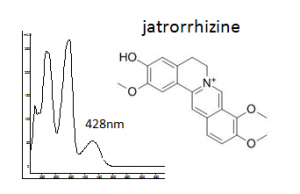Difference between revisions of "PEM E79076, embroidered silk shawl, China (19th century)"
Jump to navigation
Jump to search
| Line 9: | Line 9: | ||
== Summary of results == | == Summary of results == | ||
| − | + | HPLC profile of a low temperature (~50 °C) extract of fibers from a red 19th century Chinese silk shawl showed that both carthamin (red) and | |
| + | berberine (yellow) dyes were detected. Carthamin was most likely come from safflower and berberine from a plant that contains alkaloids, for example [http://cameo.mfa.org/wiki/Huangteng_LC huangteng]. [2] | ||
== HPLC profile == | == HPLC profile == | ||
Revision as of 12:18, 8 August 2017
Artifact Information
Orange-red Chinese embroidered silk shawl. Early to mid-19th century.
The Peabody Essex Museum in Salem, MA USA. E79076.
Summary of results
HPLC profile of a low temperature (~50 °C) extract of fibers from a red 19th century Chinese silk shawl showed that both carthamin (red) and berberine (yellow) dyes were detected. Carthamin was most likely come from safflower and berberine from a plant that contains alkaloids, for example huangteng. [2]
HPLC profile
Identified compounds
| Compound | RT (min.) | MW | UV/vis | Other |
|---|---|---|---|---|
| palmatine | 37.1 | 351 | 348,428 | major component |
| jatrorrhizine | 34.4 | 337 | 348,428 |
References
[1] Worth, S.(1986) "Embroidered China crepe shawls: 1816-1863; Dress 12:43-54.
[2] Xian Zhang,Karina Corrigan, Bruce MacLaren, Mimi Leveque, and Richard A. Laursen, Characterization of Yellow Dyes in Nineteenth Century Chinese Textiles. Studies in Conservation 52, 211-220 (2007).



